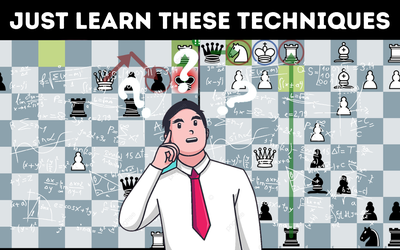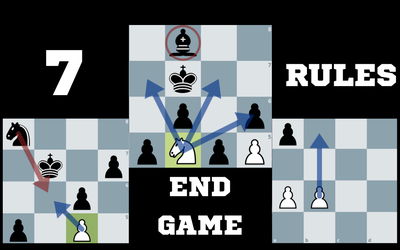
How to Stop Making Common Mistakes and Reach 1600
If you want to achieve a 1600 rating in rapid games, there are several key mistakes you should avoid. Here are some critical insights and tips to help you improve your game.Not Valuing the Bishop Pair
When you start playing chess, you might learn that bishops and knights are worth the same. However, bishops are often slightly more valuable in open positions. While there are exceptions, such as closed positions where knights can be more effective, generally, you want to keep your bishop pair unless you have a good reason to give one up.

A common mistake is seen in the Caro-Kann Defense: 1. e4 c6 2. d4 d5 3. exd5 cxd5 4. Bd3 Nc6 5. c3. Many players opt for 6. Bb5+ followed by 7. Bxc6+, giving up their bishop for a knight without a strong reason. Instead, the bishop is better placed on d3, aiming at the h7 square and putting pressure on Black’s kingside, particularly since Caro-Kann players often castle kingside.
Useless Developing Moves
Avoid making moves that develop pieces without a strategic purpose.
For example, in the Four Knights Game: 1. e4 e5 2. Nf3 Nc6 3. Nc3 Nf6 4. Bc4. Although this looks like a standard developing move, it allows 4...Nxe4, winning a pawn for Black after 5. Nxe4 d5
Instead, top players often play 4. Bb5 or 4. d4, leading to a Scotch Game where Black cannot easily gain an advantage. Learn basic opening lines to prevent making ineffective developing moves.
Pinching Pawns for No Reason
In chess, pinching pawns can often lead to giving your opponent significant activity, making it difficult to play precisely, especially in fast time controls like 10 or 15-minute games. In such scenarios, you might find yourself needing to make only moves to stay in the game.
In this position, White can safely castle, which is a solid and safe option. If Black decides to capture on c3, the engine actually sees White as having an advantage despite Black appearing to win a pawn. White's king is safe, and White's pieces are well-developed. Top players often handle this differently. Instead of taking the pawn, they might give up the bishop and cement their knight on e4 by playing: 7...f5 (solidifying the knight on e4) Notice how they avoid wasting time trying to grab the pawn, which is an important strategic insight to iron out in your own play.
Overextending Pawns
Another mistake to avoid in your games is overextending your pawns, particularly when they lack proper support. Here's an example from my games to illustrate this:
At this point, the pawn is overextended. From an amateur's perspective, placing pawns on light squares to blunt the bishop seems logical, but doing this too early can backfire. To sum up, avoid pushing pawns without sufficient support and focus on developing your pieces first. While there are exceptions, in many cases, it's better to develop your pieces before making aggressive pawn moves.
Religiously Valuing Material
This is common among lower-rated players who are often reluctant to give up the exchange, believing that rooks are always worth more than knights and bishops. However, there are exceptions where giving up the exchange can lead to a strong attack. The engine might not always consider it the best move, but it can be challenging for your opponent to defend, especially in rapid games with limited time to calculate.
Castling Into It
Don't automatically castle without assessing the position. Castling might place your king in danger if your opponent has potential attacking chances. Instead, be patient and consider the safest placement for your
king based on your opponent's setup.
By addressing these common mistakes and adopting a more strategic approach to your games, you'll see incremental gains that will translate into a higher rating over time. Remember, even elite players make errors, but they occur less frequently. Strive for consistent improvement and learn from each game.
More blog posts by Millionaire_19

7 MOST COMMON Chess Mistakes
The seven most common mistakes plaguing players of all levels, illuminating a path towards strategic…
Top 10 Middlegame Tips for Everyone
It's always good to know some theory that can result in getting better positions in the middle game,…
How to improve Chess Calculation (1500 - 2000 elo)
"Chess is 99% tactics" - Richard Teichmann